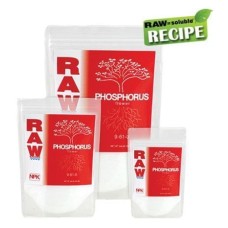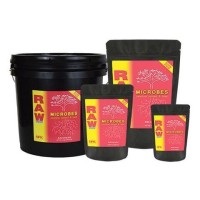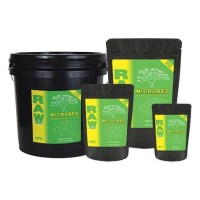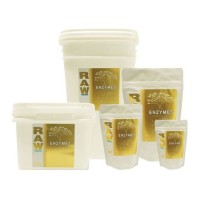Phosphorus by RAW Solubles
Phosphorus by RAW Solubles
Product Options
-
£3.95
In Stock
RAW Phosphorus: 100% Water Soluble Phosphorus
RAW Phosphorus contains 61% pure water Soluble Phosphate (P). This product also contains a small amount of Ammonium Nitrogen (9%) which plants can utilise during bloom. Phosphorus is particularly beneficial during the early rooting stage but also provides energy during fruit and flower production. RAW Phosphorus is ideal for boosting Phosphorus (P) levels, treating deficiencies and creating optimal recipe solutions. Works in conjunction with all nutrient and feeding programs.
Most base nutrients come in a grow formula and a bloom formula. A good grow formula is proportionally higher in nitrogen, but the best bloom formulas are proportionally higher in phosphorus and potassium. Phosphorus is needed throughout the life of the plant, but it is particularly beneficial during the early rooting stage and during fruit and flower production.
Mono-potassium phosphate and mono-ammonium phosphate (MAP) are water soluble forms of phosphorus. Adding a little extra MAP to a nutrient formula during the first couple weeks of vegetative growth can have a positive effect on rooting. The additional phosphorus stimulates root production, and the ammonium is assimilated directly through the developing roots. Laboratory tests have shown as much as a 20% increase in root mass with nutrient formulas augmented with a moderate increase of MAP during the early vegetative growth stage.
Phosphorus Promotes the Development of Additional Flowering Sites
Another key stage for extra phosphorus application is during the fruiting and flowering stage. During the transition from grow to bloom, a great deal of energy is diverted to flower production. So extra phosphorus helps promote the development of additional flowering sites, especially during the early stages of flower production. During heavy fruit and flower production, the plants continue to need higher levels of phosphorus to help provide energy for the developing fruit, but higher levels of potassium are also important for increased carbohydrate metabolism. Generally speaking, phosphorus and potassium are both important during the fruiting and flowering stage, but increased phosphorus is particularly beneficial during the early generative stage, while increased potassium is particularly beneficial during the final stages of fruit and flower production.
Phosphorus is the Energy Element
It is part of a molecule called ATP (adenosine triphosphate) which serves as the energy currency of the plant.
Energy from photosynthesis and respiration is temporarily stored in the high-energy phosphate bonds, then released to activate chemical reactions in the plant. If a plant develops a phosphorus deficiency, growth is stunted and quality and yield is decreased.
Phosphorus Uptake is Temperature Dependant
If the nutrient solution is too cold, plants won’t take up adequate phosphorus, and the stems and undersides of the leaves may even start to turn purple. On the other hand, it is also possible for plants to develop a phosphorus toxicity. If extra phosphorus starts to build up in the reservoir, the plants could take up too much phosphorus all at once. There are no direct symptoms of phosphorus toxicity, but phosphorus toxicity shows up first as a zinc deficiency, then as an iron or magnesium deficiency. So when using extra phosphorus, carefully follow dosing directions and try to make sure the nutrient solution stays above 58 degrees F. For best results, maintain the nutrient temperature between 68-75 degrees F.
Directions for Use:
Add 1/6 to 1/8 tsp. per gal. in reservoir for irrigations. Apply as needed
Tags: RAW, Solubles, Powder, Dry, Nutrients, Individual
Q & A
Be the first to ask a question.






